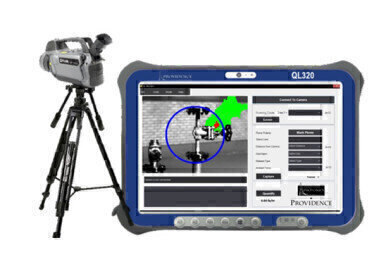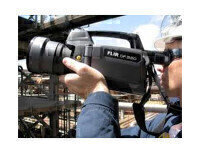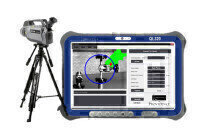Gas detection
Visualising hydrocarbon gases helps minimise venting to the atmosphere
Mar 27 2020
An in-depth article from FLIR Systems describes how its GF320 Optical Gas Imaging (OGI) camera can be used to more quickly and safely identify hydrocarbon gas venting to the atmosphere in order to reduce product loss and help meet regulatory emission reduction requirements.
A report on technologies for reducing fugitive emissions in oil and gas applications states that the U.S. natural gas industry as a whole emitted 162.4 million metric tons CO2 equivalent of methane in 2015 [1]. In addition to regulatory compliance issues, this level of fugitive emissions equates to significant lost product for operators. As a consequence, the oil and gas industry have been looking at how to best find and repair natural gas leaks at potential escape points, including compressor stations, processing plants, hydraulically-fractured wells, and along transportation lines.
FLIR Systems OGI cameras such as the GF320 can “see” hydrocarbon gases and volatile organic compounds (VOCs) that are venting or leaking to the atmosphere. Major oil and gas producers are using the FLIR GF320 to quickly check thousands of components and identify potential gas leaks in real-time, saving time and ultimately reducing product loss.
In addition to being considerably (5-10 times) faster than a traditional toxic vapour analyser (TVA), a FLIR GF320 OGI camera enables remote detection of a gas that could potentially explode or cause health issues to those breathing in the gas. Rather than standing in a cloud of gas, as is required using a TVA, operators using an OGI camera can remain on the ground, point to a spot 10 or 20 feet away, and determine if it is venting gas into the atmosphere.
As a result of these advantages, FLIR GF320 OGI cameras are increasingly recommended for use to meet new regulatory emission reduction regulations such as the 2019 Environment and Climate Change Canada (ECCC) and Alberta Environment and Parks (AEP) legislation. Other countries around the world are likely to implement regulations similar to these proactive North American emissions control and methane reduction regulations in the years to come.
Digital Edition
AET 29.2 May 2025
May 2025
Water / Wastewater- From Effluent to Excellence: Microbiological assessment of a containerized modular water reuse pilot system- Without water everything comes to a haltAir Monitoring- Probe Sampli...
View all digital editions
Events
Jun 08 2025 Denver, CO, USA
Jun 09 2025 Raleigh, NC, USA
Jun 10 2025 Toulouse, France
Jun 11 2025 Copenhagen, Denmark
Jun 17 2025 Guangzhou, China











.jpg)










